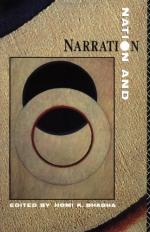|
This section contains 2,039 words (approx. 7 pages at 300 words per page) |

|
SOURCE: Lever, Susan. “The Social Tradition in Australian Women's Poetry.” Women's Writing 5, no. 2 (1998): 229-39.
In the following excerpt, Lever stresses the public and social role of nineteenth-century poetry by Australian women, noting a general preoccupation with nation-building rather than introspection.
In the epilogue to her Slip-shod Sibyls: Recognition, Rejection and the Woman Poet, Germaine Greer reproaches those women of the nineteenth and twentieth centuries who fell prey to the romantic demand to expose their female suffering in poetry.1 These women—from “L.E.L.” and Elizabeth Barrett Browning to Anna Wickham and Sylvia Plath—are reprimanded for their narcissism and for their choice of a confessional, “self-cannibalising” art over life.
Whether or not she has been influenced by her Australian upbringing, Greer's comments throw light on a quite opposite feature of Australian women's poetry. While “L.E.L.” was inventing Byronic fancies in the 1830s, Eliza Hamilton Dunlop...
|
This section contains 2,039 words (approx. 7 pages at 300 words per page) |

|


